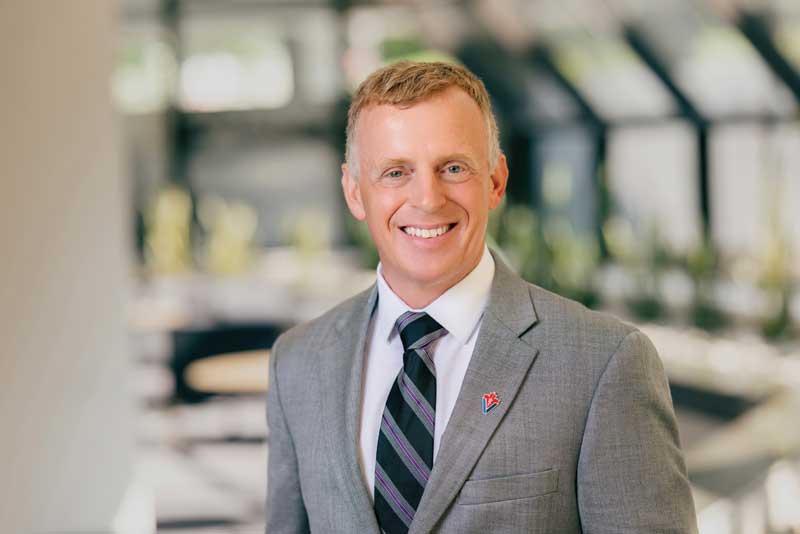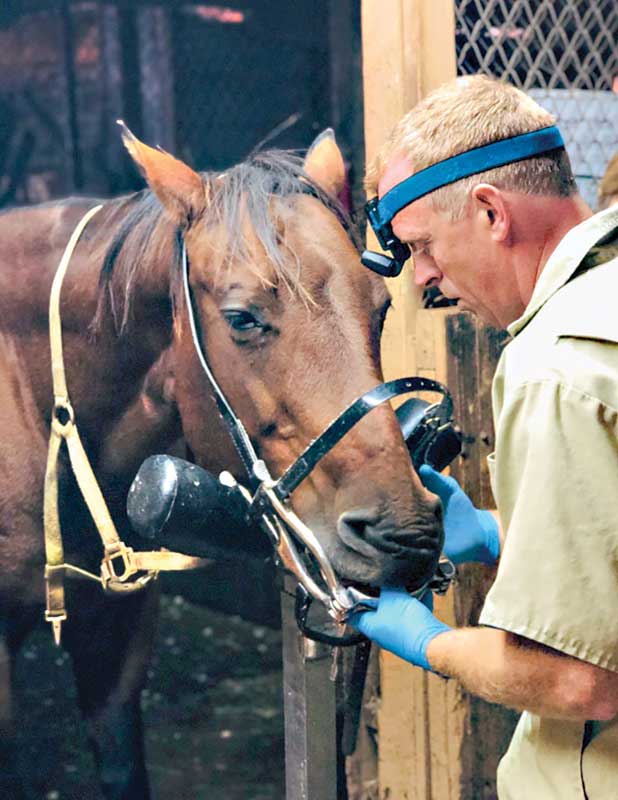5 Questions With… Trevor Lawson, DVM, president of the Canadian Veterinary Medical Association (CVMA)
For some veterinarians, the clinic is their playground. A sacred place, where they meet clients and treat patients; where they teach and learn, where they practice. Others, though, prefer the adventure of being out on the field. Such is the case for Trevor Lawson, DVM

For some veterinarians, the clinic is their playground. A sacred place, where they meet clients and treat patients; where they teach and learn, where they practice. Others, though, prefer the adventure of being out on the field. Such is the case for Trevor Lawson, DVM.
“I have done a small amount of small animal practice early in my career. [I] enjoyed it, but there was something about the confines of being inside a clinic I didn’t enjoy as much,” admits Dr. Lawson. “So, I gravitated towards being on the farm.”
Growing up on a farm in rural New Brunswick, Lawson, who was heavily influenced by his grandfather—a “lifelong farmer”—unsurprisingly pursued large animal practice.
“I spend about three-quarters of my time doing equine practice, and a quarter doing bovine practice,” he says, sharing how he has focused exclusively on large animals since graduating from the Atlantic Veterinary College in 2004. “I have been enjoying every minute of it.”
More recently, apart from his veterinary work on farms, Lawson has been busy with his duties as president of the Canadian Veterinary Medical Association (CVMA). “My previous experiences hopefully prepared me well for this,” he tells Veterinary Practice News Canada, when asked how his background influences his leadership. “I have worked with a very diverse group of clients, between food producing clients and equine clients. I think I have a broad scope of understanding of the issues concerning veterinary team members.”
Among the issues the association is currently focused on under his leadership is the workforce shortage. According to Lawson, the challenge is in the lack of training capacity in Canada.
“The workforce is probably the number one priority of our profession right now—not just in Canada, but also internationally. Fortunately, we’re making great strides toward addressing the issue in conjunction with the work being done by veterinary colleges,” Lawson says. According to the CVMA president, more projects are being funded in support of addressing the labour shortage in veterinary medicine.
We caught up with the association’s new president at the CVMA Convention in Quebec City this past summer to learn more about the challenges facing Canadian veterinary professionals today; the innovations that have impacted the industry, as well as the CVMA’s main points of focus.
1) How has your tenure been as CVMA president?
TL: I think my background as a large animal practitioner prepared me well for this in that I have worked with a very diverse group of clients, between food producing clients and equine clients. I have a broad scope of understanding of the issues that concern veterinary team members. I believe the strength of our organization comes from the groups that are involved—not just from one individual. I have been reaching out to different groups in and outside of veterinary medicine to get their inputs. I need extra eyes in addressing industry issues.

2) What would you say are the more pressing issues surrounding Canadian veterinary professionals today?
TL: The workforce is probably the number one priority of our profession right now—not just in Canada, but also internationally. We understand we need more training capacity here in Canada. Provinces have so far shown very strong desire to be part of the solution, so we’re very excited about that. More efforts are being funded, and we’re hopeful we’re going to see more positive news on the funding side in the coming months.
I think another major priority for the profession is member wellness. CVMA has had quite a few irons on the fire through our wellness advisory group and they’ve done great work in the last couple of years, including the Togetherall peer-to-peer support program. Initially, that program was funded for members only, but we’ve recently made strides to get funding, so we’ve opened it up to all veterinarians and RVTs in Canada. I think that is something we are immensely pleased with. Now, the goal is to spread the word and get people connected through that means.
There are several other issues in the background that are very important. One is on xylazine infiltrating the street drugs. We’ve been working with regulators here in Canada, as well as our American counterparts, to try to ensure reliable supply for legitimate veterinary use. While this is a major issue for large animal practitioners, it’s not exclusive to them. Wildlife and small animal practitioners also need access to xylazine in a safe and reliable form. We’re going to continue to work on that file. We are very optimistic our message is very well received by regulators. We certainly anticipate that, anytime there’s going to be a change, we are going to be the first to know and we are going to be able to respond.
3) We saw a good mix of exhibitors at this year’s CVMA Convention. Were there particular products or innovations you think are strongly impacting the industry?
TL: I think what stood out the most at the CVMA [convention] was that there were more booths regarding telehealth provisions. I think that’s just evidence of what we’ve seen in the last few years. Telehealth has been getting more of a foothold. Obviously, the pandemic brought to the forefront certain technologies that weren’t readily available in the past. It started to force us to think a little bit about innovation and how they can still provide the services to society that we need to do. I think we’ll probably see that continue to grow.
We’ve done our work at CVMA, as well as in the provinces, of creating position statements on telehealth provisions. I think what we’re trying to do is to really set the stage for our colleagues across Canada to successfully jump in on that avenue and make that part of their daily active practice. It’s no longer an introduction of what it is, but rather an integration.

4) What are urgent medical issues we are seeing in Canada?
TL: I think that when we have a system that is stressed and overwhelmed, and we’re falling behind on wellness or preventative care, whether that is annual vaccine appointments, when those things start to lapse, I think we start the risk of seeing an uptick in sick vet calls because they’re falling behind. It’s not always about urgent cases, but perhaps a case that could’ve been preventable had we been able to keep up on getting their vaccines done on time.
There would be a few good examples in the companion animal world that would stand out: in Nova Scotia, we’ve seen several Bordatella outbreaks. I can’t help but wonder in many cases, “Are we seeing that because some of these animals have lapsed in their protection window and they’re not getting their boosters on time so they are a few months behind and now they’re becoming more at risk?” The great risk there is if that happens too much, we see more and more sick pets, more and more urgent care—that’s much more time-consuming for veterinary teams, and that only puts the sick pets much more further behind. I think that’s one of the concerns I’ve seen. Just this past spring, I’ve spent a couple of days revisiting my small animal days, volunteering in small animal work to help a friend in putting up vaccine work.
5) What has been the association’s focus?
TL: We will remain workforce focused. We are going to continue to work with our partners in the provinces, in the vet colleges, trying to advance the case for increased training. We’re working on webinars and programs with the Immigration, Refugees and Citizenship Canada (IRCC), intended to try to connect with employers to try to gain better understanding for employers recruiting internationally on the best steps to take. We’ve formed good relationship with them as we understand that it’s likely part of our solution in trying to build a very resilient and stronger course. What we’re seeing in vet medicine is not necessarily exclusive to our field. The whole world is going through this challenge. We’re trying to build back some of that extra capacity and resiliency in our profession and I am quite optimistic, based on the progress we’ve seen in the last year, we’re on the right track and we’re going to see significant progress in the coming years.


